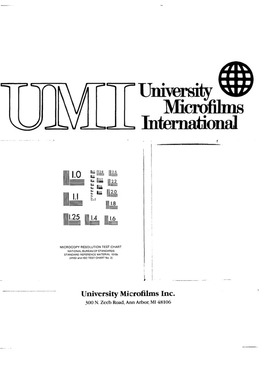| dc.contributor.author | Brandenburg, David M., | en_US |
| dc.date.accessioned | 2013-08-16T12:29:24Z | |
| dc.date.available | 2013-08-16T12:29:24Z | |
| dc.date.issued | 1985 | en_US |
| dc.identifier.uri | https://hdl.handle.net/11244/5374 | |
| dc.description.abstract | Descriptions of the following genera were prepared for the volume treating the Poaceae for the Vascular Flora of the Southeastern United States: Ammophila, Arrhenatherum, Brachyelytrum, Briza, Cynosurus, Dactyloctenium, Deschampsia, Holcus, Milium, and Sclerochloa. | en_US |
| dc.description.abstract | The final chapter constitutes a treatment of wetland Carex (Cyperaceae) for Kentucky. Keys, maps, and illustrations are provided. | en_US |
| dc.description.abstract | The third chapter introduces the application of backscattered electron imaging (BEI) as an effective means of visualizing silica bodies in grass leaves. Advantages of BEI include the production of high-contrast images with sharply demarcated outlines, even for silica bodies that are subsuperficial or present in small numbers. Furthermore, destruction of the sample is not required during preparation and any dried herbarium specimen may be utilized. | en_US |
| dc.description.abstract | Scanning electron microscopy reveals that Crypsis, Dactyloctenium, Diarrhena, Eleusine, Sporobolus, and Zizaniopsis (Poaceae) produce atypical caryopses in which the pericarp is free or partially free from the seed coat. In Sporobolus and Crypsis, the pericarp becomes free from the seed coat upon moistening. The pericarp is thin and papery in both Eleusine and Dactyloctenium; in the latter, the pericarp dehisces to release the seed at maturity. The pericarp in Diarrhena is loosely adherent to the seed coat and easily removed. The fruit of Zizaniopsis is asymmetrically inflated and achene-like. | en_US |
| dc.description.abstract | Two non-overlapping groups of OTU's corresponding to Diarrhena americana var. americana and var. obovata were revealed in cluster and principal coordinates analyses of Diarrhena americana (Poaceae). A stepwise discriminant functions analysis used four characters to effect complete separation of the two groups of OTU's. Two caryopsis types occur and are correlated with the varieties. The conclusion is reached that recognition of two species is warranted. | en_US |
| dc.description.abstract | Four independent investigations were conducted in the Poaceae and one in the Cyperaceae. | en_US |
| dc.format.extent | x, 305, [1] leaves : | en_US |
| dc.publisher | The University of Oklahoma. | en_US |
| dc.subject | Grasses. | en_US |
| dc.subject | Biology, Botany. | en_US |
| dc.subject | Carex. | en_US |
| dc.title | Systematic studies in the Poaceae and Cyperaceae / | en_US |
| dc.type | Thesis | en_US |
| dc.thesis.degree | Ph.D. | en_US |
| dc.note | Source: Dissertation Abstracts International, Volume: 46-12, Section: B, page: 4106. | en_US |
| ou.identifier | (UMI)AAI8602711 | en_US |
| ou.group | College of Arts and Sciences::Department of Microbiology and Plant Biology | |
